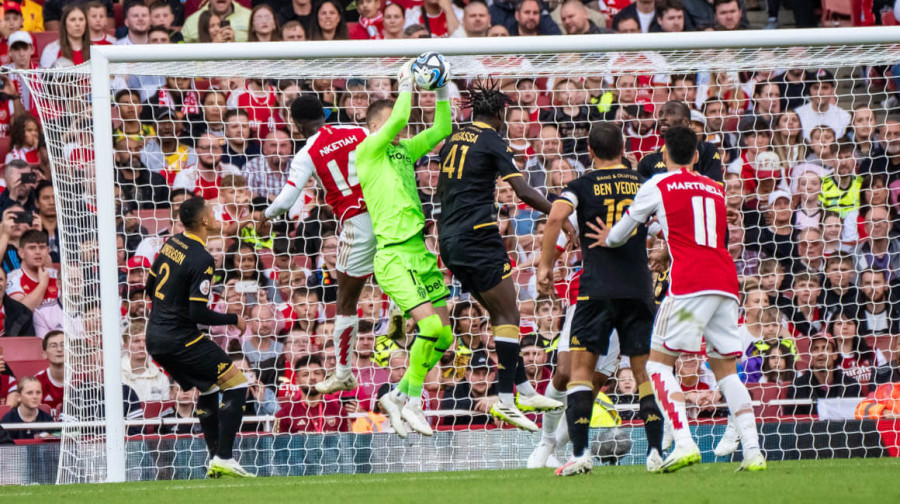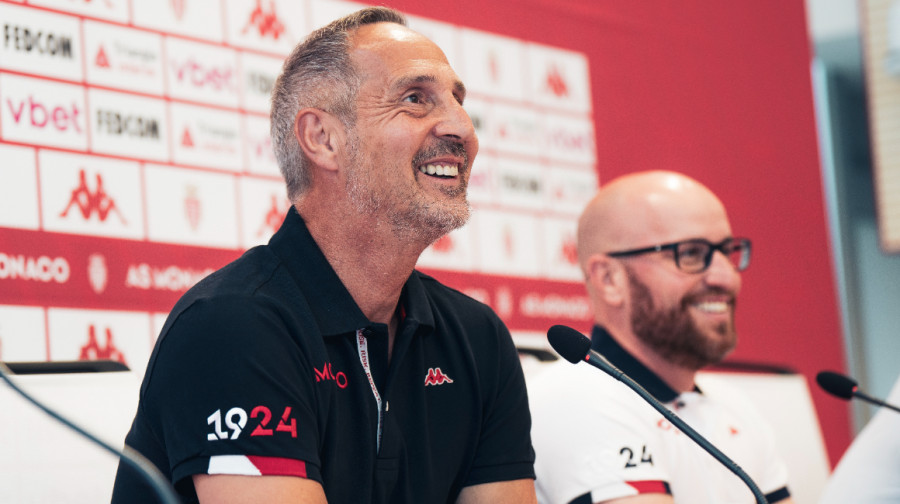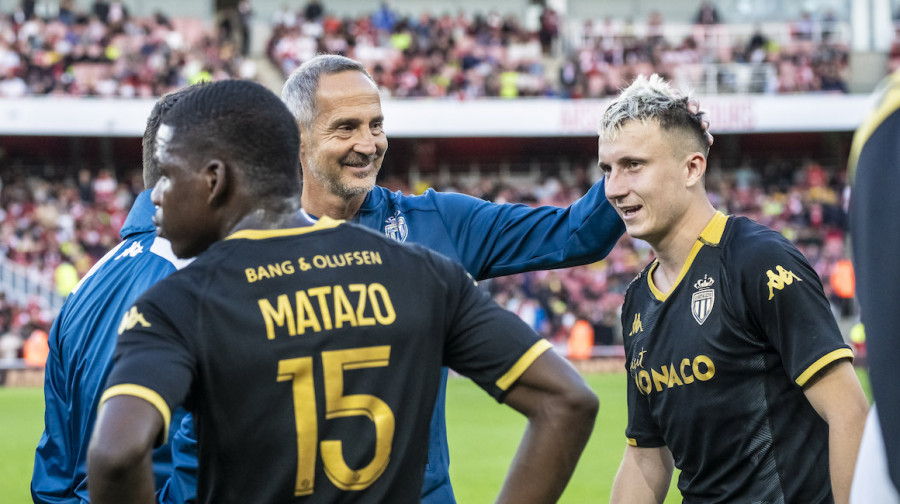New manager, new sporting director: the 2023/24 season heralds a new era at AS Monaco, but perhaps one that doesn’t mark such a radical departure from its predecessor.
As Adi Hütter and Thiago Scuro, the replacements for Philippe Clement and Paul Mitchell took their seats for their first media outing in July, the page had been officially turned. Mitchell’s departure as sporting director had been planned, Clement’s less so. The Belgian paid the price for a poor end to the season, which leaves Les Monégasques without any form of European football this campaign.
A sprinkling of continuity in an evolving project
However, Scuro and Hütter may not represent the most radical of departures from their predecessors. The project hasn’t been torn up and re-written over night. Scuro’s appointment in particular feels like a natural evolution of the project. The Brazilian arrives from Bragantino, and like his predecessor Mitchell, has a history of working within the Red Bull system. Mitchell is conscious of not being a “volatile element” in the project, and through the appointment of Scuro, as well as his assistance throughout the summer, he is hoping to maintain an element of stability.

“We will keep the same philosophy over multiple seasons,” said Scuro upon his presentation. Hütter also shares similarities with Clement, although from the outset, the former has seemingly managed to instil a more dynamic, fluid attacking system. “It is by pressing high that we can put an aggressive style in place,” said Hütter.
The Austrian isn’t, therefore, the most radical of departures from his predecessor either. That is ultimately the plan at Monaco. Following years of turbulence prior to Mitchell’s arrival, there is a need for stability: the calm after the storm.
A perfectible roster
The most important positions filled, Monaco’s attention turned towards creating the optimal conditions to allow Hütter to thrive. Scuro’s South American connections perhaps allowed Jean Lucas’ departure to finally materialise. The Brazilian has been on the transfer list for some time, and he has now joined Santos. However, unlike in some previous seasons, it hasn’t been a revolving door at the club’s Performance Centre in La Turbie this summer.

Much of Monaco’s business was dependent on outgoings. Axel Disasi and Youssouf Fofana were both expected to depart this summer – and for big money. However, the suitors were not necessarily forthcoming. Disasi was on the shortlists of many clubs, but at the top of none of them. Chelsea finally came to the table in August and quickly concluded a deal. The €45m figure received for the France international gives the Principality club some wriggle room in the market, and further arrivals seem imminent. Despite links away, Fofana remains at the club.
Philipp Köhn and Mohammed Salisu are the only two arrivals so far. It is hoped that Köhn will be an improvement on Alexander Nübel, who didn’t always live up to the big occasion. The Swiss goalkeeper’s performances for Monaco in pre-season are a source of optimism.
A reduced margin for error
Salisu has yet to feature for Monaco since his arrival from Southampton, but the Ghanaian international has already accrued considerable experience given his young age. Extra depth is needed in defence, but the foundations have been well-laid for a more solid campaign at the back.
Further reinforcements are being targeted further up the pitch in the midfield and attack, and the need for an extra striker has been made much more pressing in the wake of Breel Embolo’s ACL injury. Monaco will be looking to conclude as much business as early as possible to avoid the slow starts that have plagued previous campaigns.

It is all the more important to start quickly this season. With the reduction of the top flight from 20 to 18 teams, there will be four fewer games, reducing the margin for error. Slow starts will be more severely punished with less time to make up the deficit.
“We want to bring stability.”
The strength of the club’s rivals makes the race for Europe an exciting one. Rennes and Marseille look particularly strong following considerable recruitment this summer, Lille have retained many of their key assets, Nice will be looking to bounce back after a disappointing campaign, whilst Strasbourg, now backed by BlueCo, could represent a fresh challenger. With the expansion of the Champions League from next season, there will be four spots up for grabs in Ligue 1 – as the club prepares to celebrate its cententary in 2024, there is a determination to once again compete on the continent.

Heading into the season, which kicks off against Clermont Foot on Sunday, there is no denying that Monaco are one of the league’s most unknown quantities. But equally, this is no longer a club that will change its entire orientation and philosophy at the drop of a hat – the project is what it is, and it is here to stay.
“My history confirms it. I have always had long relationships with my coaches. We want to bring stability. Working with the same people over the long-term allows you to get results,” said Scuro. Working within the same confines breeds success too. This new duo in many ways are an extension, not a deviation, from the old regime, and that is no bad thing for a club that is looking to reassert itself in France’s elite.
Make sure you’re never left out of the conversation.
Sign up for the Monaco Life newsletter, and follow us on Facebook, Twitter, Instagram and LinkedIn.
Photo by Luke Entwistle, Monaco Life
